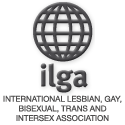Way back in the early 1970s, I was a member of the newly-formed Gay Liberation Front. It was Britain’s first direct action human rights movement of openly lesbian, gay, bisexual and transgender people.
To combat the invisibility and denigration of the queer community, we decided to organise a ‘Gay Pride’ march, with the theme of being out and proud. This was a radical departure from the norm. In those days, nearly all LGBT people were closeted and many felt ashamed of their sexual orientation and gender identity.
The first ever Gay Pride march in the UK took place in London on 1 July 1972. Only 700 people turned up. Many of my friends were too scared to march. They thought everyone would be arrested. That didn’t happen, but we were swamped by a very heavy, aggressive police presence. They treated us like criminals. It was quite scary.
Despite this intimidation, we were determined to have a fun time and make our point. The march was a carnival-style parade, which went from Trafalgar Square to Hyde Park. There were lots of extravagant costumes and cheeky banners poking fun at homophobes like the morality campaigner Mary Whitehouse.
We got mixed reactions from the public – but predominantly curiosity and bewilderment. Most had never knowingly seen a LGB or T person, let alone hundreds of queers marching to demand human rights.
Unlike nowadays, there was no festival or entertainment in Hyde Park after the march – just an impromptu Gay Day. Everyone bought food, booze, dope and music. It was all shared around.
We played camped-up versions of party games like spin the bottle and drop the hanky. I won one of the games and my prize was a long, deep kiss with a gorgeous French gay activist. But it was more than good fun. Because we were same-sex kissing in public, which was an arrestable offence in those days, it was also a gesture of defiance.
Looking back over the 46 years, it is extraordinary the way Pride has grown from one march with less than a thousand people to dozens of nationwide events with a combined attendance of nearly a million.
The increasing acceptance of LGBTs is another big change. In 1972 homosexuality was still viewed as an illness, lesbian mothers had their kids taken off them by the courts, you could be sacked from your job for being LGBT and the police were at war with the gay community – with thousands of gay and bisexual men arrested for consenting, victimless behaviour.
Although there still remain many injustices to overcome, our community has made huge strides towards freedom over the last four decades. None of these gains have been given to us on a plate. Every advance has been the hard-won result of determined campaigning. It took us 34 years to win an equal age of consent and 43 years to win marriage equality!
There is no room for complacency. Although all the major anti-LGBT laws have now been repealed, trans people are still battling to reform the Gender Recognition Act so they can self-define, to legally change their gender without having to get medical approval. Still one-third of LGBT people have been victims of hate crime and half of LGBT kids in schools have suffered bullying. That why Pride events remain important and why they need to remain political.
We also need to remind ourselves of the big difference between the first Gay Pride march and today’s Pride parades. Back in 1972, there were no calls for equality; our demand was liberation. We wanted to change society, not conform to it. Equal rights within an unjust society had no appeal for us. Our radical, idealistic vision involved creating a new sexual democracy, without homophobia and misogyny. Erotic shame and guilt would be banished, together with compulsory monogamy, gender roles and the nuclear family. There would be sexual freedom and human rights for everyone – LGBT and straight. Our message was “innovate, don’t assimilate.”
We had a beautiful dream, but I fear that it’s fading fast. In the nearly five decades since the first Gay Pride march, there has been a massive retreat from the imagination and activism of the early LGBT liberation pioneers. Most LGBT people no longer question the values, laws and institutions of mainstream society. They are content to settle for equal rights within the status quo.
In contrast, the first Gay Priders saw the family as “a patriarchal prison that enslaves women, gays and children” and sought to transform it. How times change. Since the turn of the century, the focus has been more conservative, with slogans like: “We are family: marriage and parenting rights – now!” The focus on safe, cuddly issues like same-sex marriage and adoption indicates how LGBT people are increasingly reluctant to rock the boat and only too happy to embrace traditional heterosexual aspirations.
This political retreat signifies a huge loss of confidence and optimism. It also signals that even the LGBT movement has succumbed to the mainstream politics of conformism, respectability and moderation.
Perhaps it is time to revisit the radical ideals and values of the LGBT liberation pioneers? We can, surely, learn from their imaginative, spikey, irreverent and defiant vision of what society could be – rather than settle for assimilation into society as it is.
“Innovate, don’t assimilate!” This slogan was relevant in 1972 and it remains just as relevant – and inspiring – today.
by Peter Tatchell
Source – Peter Tatchell Foundation







